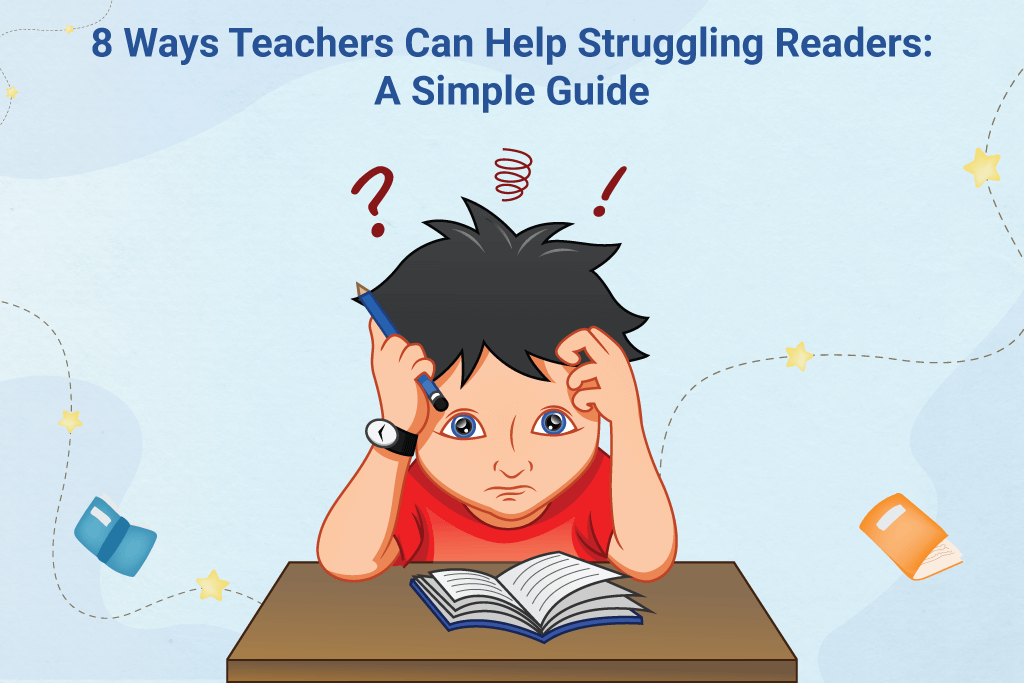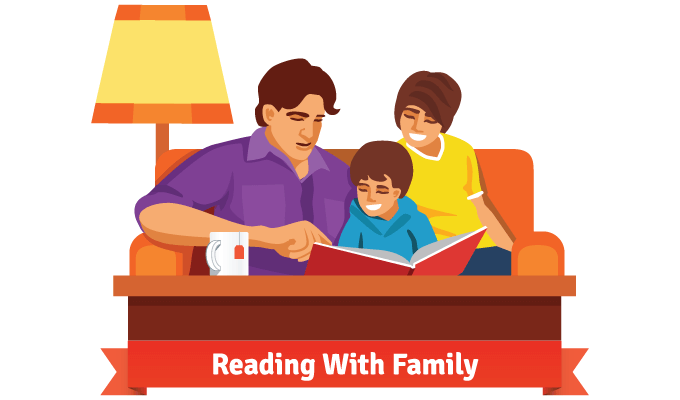A Simple 8-Way Guide For Teachers To Helping Struggling Readers

Literacy and reading skills in a student speak of their academic and personal development. A student who can read and write easily can have more academic success. It is simply because reading proficiency enhances a student’s critical thinking and communication abilities.
Unfortunately, not all students have a smooth journey when it comes to acquiring reading skills. Many students struggle to decode the words or even understand the text. They are unable to maintain reading fluency. These obstacles affect their academic progress and also bring down their confidence. But teachers can play a great role in helping a student overcome these challenges.
Let’s look at how teachers can create a good learning experience for struggling students.
Transform Learning Today
Ways Teachers Can Help Struggling Students
Many parents often ask teachers, ‘How to teach my child to read?’The below-mentioned are some methods teachers and parents can use to help struggling students read fluently.
1. Incorporating Hobbies Into Reading
Let’s face it! Students should enjoy the process of reading and understanding the text. It is possible by making them read texts that match their hobbies.
Teachers can personalize and make the process of reading enjoyable for the students. Integrating the favorite hobbies of the student into reading can help them build connections between what’s written and their own experiences. It helps in deepening their understanding of the text.
For example, if students have a keen interest in astronomy, they might enjoy reading space-related literature. They also become more curious and want to explore more reading materials.
2. Know The Family
Sometimes, the environment of a family can have a significant influence on a child’s learning journey. So, as a teacher, you must try to understand the dynamics of your students’ families. It might help you get a deeper insight into why the student struggles to read fluently.
Getting to know his family can help you create an environment for open communication. So, you can easily create a supportive network for the child’s academic success.
Families may face various challenges that can impact a student’s ability to focus on reading. Knowing these circumstances will help you provide targeted support to the student.
3. Encourage Reading At Home
Encouraging students to read at home is one of the best reading strategies for struggling readers. It helps in making the student develop a lifelong love for learning. You can start by convincing the parents to create a positive reading environment at home.
Parents can create a designated reading space for the child. This space should be quiet, well-lit, and stocked with good books that the children will love to read.
As a teacher, you can also suggest parents to be involved in the reading activities. Parents can celebrate the little achievements of the students or provide them with friendly reading instruction so that they don’t fear reading.
4. Leverage Phonics
Phonics is an effective approach to teaching reading to struggling readers. Teachers can use this approach to help students understand the relationship between sounds and letters. With the help of phonics, they can easily decode words and develop good literacy skills at a young age.
However, phonics instruction should be sequential and systematic. So, you can start the phonics course for the students beginning with basic letter, and sound association and introducing more complex phonetic patterns later.
Following the step-by-step process of delivering effective phonics instruction will help struggling readers build a strong foundation.
5. Frequent Library Visits
Taking the students to the library quite often can nurture the love for reading among the students. Library visits can be very beneficial for those students who face challenges and literacy.
Libraries are a place that exposes a student to many different worlds, ideas, and imaginations. Besides, students can also choose books that match their interests and hobbies. It helps them have a positive reading experience and they can easily cultivate a reading habit.
6. Pair Them In Groups
Instead of relying on the conventional learning approaches, you can try pairing struggling readers in groups. Group learning can positively impact their academic performance. It can also create a supportive environment where students help each other.
When you group a struggling reader with fluent readers, you give them exposure. Struggling readers can understand the strategies that their peers use. When they speak out their thoughts and ideas, it helps in enhancing their comprehension and critical thinking skills.
You can also encourage students to engage in discussion and communication related to phonics. Allow the students to phonics initial sounds among themselves. Learning from their peers helps them understand better.
7. Set High Expectations
If you want to figure out how to teach a preschooler to read, set high expectations for them.
Setting high expectations is always a powerful strategy that teachers can adopt to help struggling readers.
You can consistently challenge the students to aim for excellence. It will help in instilling confidence and motivation in the students. They can feel motivated to take a step towards their academic success. But it’s also important that you set achievable goals for them.
Teachers must break down large objectives into smaller and manageable steps for the students. Following these steps, struggling readers can move ahead in a structured manner and feel positive about themselves.
8. Stay Updated On The Latest Teaching Methods
Teachers must always stay updated with the latest teaching methods. It becomes important especially when you are trying to support struggling readers. Every day, you must try to find innovative approaches to make reading simple for the students.
One specific area that educators should always stay updated on is the advancements in phonics. Teaching phonics is an important part of developing good reading and grammar skills in students. With the help of phonics, you will be able to provide the best possible education to the students.
Transform Learning Today
Conclusion
Teachers are a student’s best friend when it comes to learning. As a teacher, you play a great role in building the language and reading skills of a student. So, if a student is struggling, you need to look for ways to make him better and more proficient in learning.
These eight ways can help you bring positive changes into your students’ learning experiences. You can encourage the student to read more with the help of these ways. Besides, teachers should promote phonics learning among the students so that they have a good grasp of reading and understanding what’s written in the text.
You can explore the Jolly Phonics online course for teachers to get comprehensive training to learn effective teaching strategies.

Hema Dave
Stemming from the aspiration to nurture and inspire young minds, Hema started her professional journey into education 20+ years ago. She founded 'Phonic Smart' as a trained educationist, an institute committed to equipping children with phonics skills and helping parents and teachers implement them effectively. Her diverse skill sets, encompassing teaching, teacher training, and coaching allow her to contribute valuable insights to the education industry.


